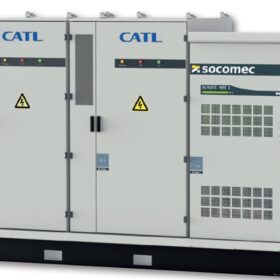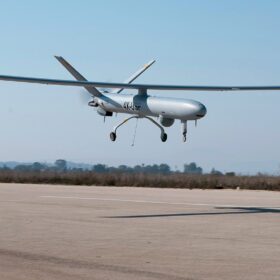Energy sharing in multi-microgrid systems with V2G
Researchers in Australia have developed a reconfigurable structure of a multi-microgrid to enhance the penetration of distributed energy resources in the presence of vehicle to grid technology (V2G) and found that both technical and economic aspects of the system have improved significantly.
Beny launches PV-ready EV charging station
Beny New Energy says its new charger can deliver power at a range of 360 kW—600 kW. It supports various connection standards.
PV-powered cars and the parking dilemma
Researchers in Portugal have addressed the so-called ‘parking dilemma’ of electric cars incorporating photovoltaic modules. They looked into the tradeoff between charging the car and raising its inside temperature. They calculated the critical time as a function of the car’s solar capacity.
Battery heavyweights reaffirm commitment to solid-state technology
Only weeks after Chinese battery and car manufacturers united as part of a government-led initiative to commercialize solid-state battery technology, South Korea’s Samsung SDI has confirmed its readiness to start mass production of its all-solid-state battery technology with an energy density of 900 Wh/L.
U.S. startup offers solar kit for VIPV applications
Worksport, a U.S. technology company, has announced a protective cover for pickup trucks fitted with solar PV modules. The kit includes a battery and an inverter and is meant to be a portable power source for leisure activities, such as camping, or as a temporary backup to recharge electronics or small appliances during power outages.
Socomec releases new modular energy storage system
Socomec says its new modular energy storage system includes a converter and up to six battery cabinets. At maximum capacity, it can store 1,116 kWh.
Organic cathode for high-energy, fast-charging lithium-ion batteries
Massachusetts Institute of Technology (MIT) researchers have developed a new organic cathode material with an energy density higher than most cobalt-based cathodes. It can charge–discharge in as little as six minutes. Automaker Lamborghini has licensed the patent for the technology.
Dutch solid-state battery maker acquires factory in Scotland
Dutch startup LionVolt has acquired AMTE Power’s battery cell production line in Scotland. It says it will use the assets for pilot production of its 3D solid-state thin-film batteries.
Photovoltaics for unmanned aerial vehicles
An international research team has identified parameters to integrate PV cells into unmanned aerial vehicles (UAVs).
Weekend Read: Artificial opportunities
Artificial intelligence (AI) is hot right now and is finding central applications in homes and businesses as they move from simple grid connections to self-generation, energy storage, electric vehicle (EV) charging, and load-shifting revenue streams. With AI everywhere, what’s the difference between advanced control, via simple algorithms, and true intelligence?










